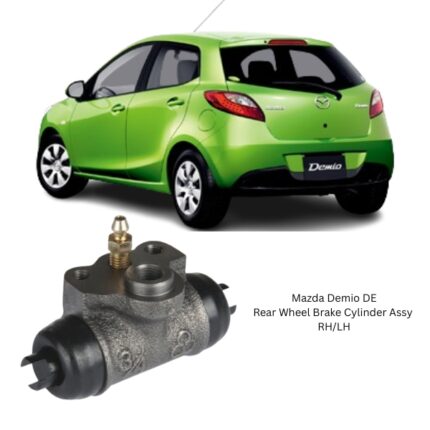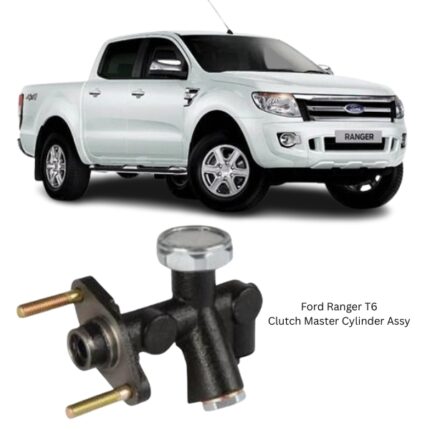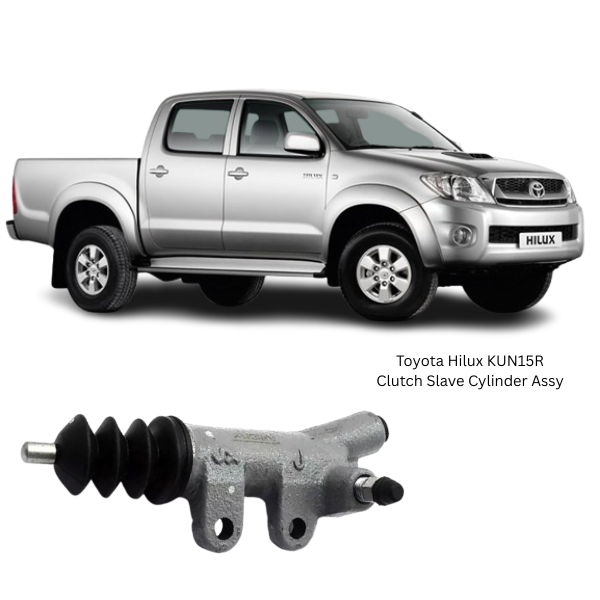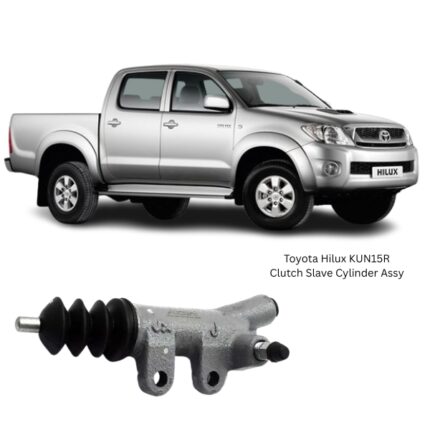Get Toyota Hilux KUN15R Clutch Slave Cylinder Assy 31470-0k020 in Kenya
The Clutch Slave Cylinder Assembly is a key hydraulic actuator in the manual transmission system, responsible for engaging and disengaging the clutch through pressure-based motion. While often small and concealed within the engine compartment or bell housing, its role is central to smooth gear transitions, clutch control, and overall drivability.
Functioning as the endpoint of the clutch hydraulic circuit, the clutch slave cylinder translates brake fluid pressure—generated by the clutch master cylinder—into mechanical movement. This movement operates the clutch release mechanism, which then disengages the clutch disc from the flywheel, allowing the driver to shift gears without mechanical resistance.
Function and Operation
The clutch system in a manual transmission relies on precise control over the engagement and disengagement of the clutch disc. This is where the clutch slave cylinder plays its part. Connected to the clutch master cylinder via a hydraulic line, the slave cylinder contains an internal piston and seal system. When the driver depresses the clutch pedal, hydraulic fluid from the master cylinder is forced through the clutch line and into the slave cylinder.
This hydraulic pressure pushes the piston inside the slave cylinder outward. The piston’s movement acts directly on the clutch fork or release bearing, which in turn pushes against the clutch diaphragm spring. This action pulls the pressure plate away from the clutch disc, disengaging the transmission from the engine. The driver is then free to select or change gears.
When the clutch pedal is released, the pressure inside the hydraulic line drops, and the internal spring (or return mechanism) retracts the slave cylinder piston, re-engaging the clutch disc and restoring power flow from engine to transmission.
Key Components of the Assembly
A standard clutch slave cylinder assembly includes the following essential elements:
-
Cylinder Housing: Typically made from high-strength cast aluminum, iron, or steel. This forms the rigid enclosure in which the hydraulic action takes place.
-
Piston: The moving component inside the cylinder that translates hydraulic force into mechanical motion.
-
Hydraulic Seal (Cup Seal or O-Ring): Positioned around the piston, this rubber seal maintains fluid pressure and prevents internal leakage.
-
Pushrod or Actuating Rod: Extends from the piston to the clutch fork or bearing, transmitting the piston’s motion to the mechanical clutch release system.
-
Return Spring (Internal or External): A compression spring that retracts the piston once hydraulic pressure is released.
-
Hydraulic Inlet Port: Connects to the fluid line from the master cylinder.
-
Bleeder Screw: A small valve used to expel air from the hydraulic system during installation or servicing.
Depending on the design, some slave cylinders are mounted externally on the bell housing, while others—known as concentric slave cylinders (CSC)—are integrated inside the bell housing and surround the transmission input shaft.
Materials and Construction
High durability and resistance to wear, pressure, and heat are necessary characteristics for all materials used in clutch slave cylinders. Common construction materials include:
-
Anodized aluminum or cast iron for the cylinder body: Provides rigidity and corrosion resistance.
-
Polished steel or ceramic-coated alloy for the piston: Ensures low-friction movement and long service life.
-
EPDM rubber or Viton seals: Chemically resistant to brake fluid and designed to withstand thousands of actuation cycles without failure.
-
Powder-coated or zinc-treated housings: Used to combat rust, especially in areas prone to moisture or road salt.
These material choices help the slave cylinder endure daily operation, thermal cycling, engine bay contaminants, and the high-pressure conditions inside the hydraulic clutch system.
Common Design Variations
There are primarily two types of clutch slave cylinders:
-
External Slave Cylinder:
-
Mounted outside the transmission bell housing.
-
Operates a separate clutch fork that pivots to engage the clutch release bearing.
-
Easier to service or replace without removing the transmission.
-
-
Concentric Slave Cylinder (CSC):
-
Installed inside the bell housing and directly integrated with the clutch release bearing.
-
Acts concentrically around the transmission input shaft.
-
More compact and efficient in design, but harder to access and typically requires transmission removal for replacement.
-
Installation Process
Installing a clutch slave cylinder involves several steps depending on the vehicle configuration and whether the unit is internal or external. A general overview includes:
-
Securing the vehicle and gaining access to the transmission housing area.
-
Disconnecting the hydraulic clutch line at the slave cylinder’s inlet port.
-
Removing the mounting bolts that secure the cylinder to the transmission or bell housing.
-
Installing the new slave cylinder in the same orientation and tightening bolts to torque specifications.
-
Reconnecting the hydraulic line, ensuring proper sealing with no fluid leaks.
-
Bleeding the clutch system using the bleeder screw to remove trapped air.
-
Refilling brake fluid reservoir and confirming full pedal pressure before operation.
-
Road-testing the vehicle to ensure clutch engagement and release are smooth and consistent.
Symptoms of a Failing Clutch Slave Cylinder
A failing or worn clutch slave cylinder can disrupt clutch operation and lead to drivability issues. Common symptoms include:
-
Difficulty shifting gears, especially when the engine is running.
-
Soft or spongy clutch pedal that does not return to the rest position.
-
Hydraulic fluid leaks around the cylinder or under the vehicle.
-
Unusual clutch pedal travel or engagement point.
-
Contaminated fluid in the reservoir, often darkened due to internal seal wear.
Ignoring these signs can eventually lead to complete clutch failure and damage to the transmission or clutch assembly.
Maintenance and Lifespan
The clutch slave cylinder typically lasts tens of thousands of kilometers, depending on usage conditions, driving style, and the health of the clutch system overall. While the unit itself is low-maintenance, it should be inspected:
-
During clutch system services or fluid flushes.
-
When replacing the clutch disc or pressure plate.
-
If fluid leaks or poor clutch engagement is detected.
Regularly checking and replacing hydraulic fluid, using the correct brake fluid type (DOT3 or DOT4 as specified), and maintaining the master cylinder helps prolong the life of the slave cylinder.
Role in Overall Transmission Health
Though small in size, the slave cylinder plays a pivotal role in preserving:
-
Smooth and controlled gear changes
-
Effortless clutch engagement
-
Even clutch wear and long clutch lifespan
-
Driver comfort and control in stop-and-go traffic
Without a properly functioning clutch slave cylinder, the clutch system cannot operate efficiently, which can result in driveline stress, gear grinding, or unexpected vehicle behavior.
Follow us on Facebook for more parts.





Reviews
Clear filtersThere are no reviews yet.